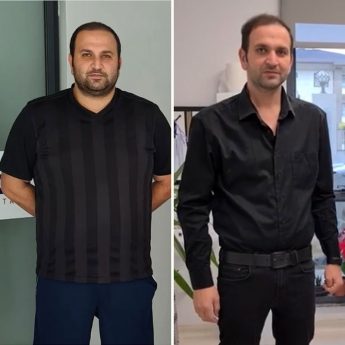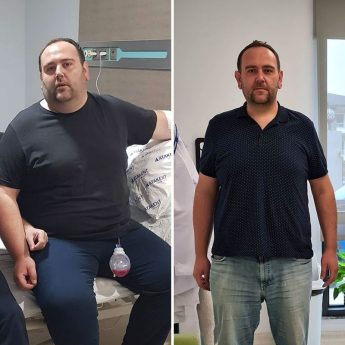Gastric Bypass operations are divided into 2. One of them; RNY Gastric Bypass is known as Roux-en Y Gastric Bypass with its long name. It is a bariatric surgery method that has been applied the most in America and Europe. In this operation, the method provides both restriction of the stomach and reduces absorption (calories).

Due to the fact that it is a surgical operation, general anesthesia is applied. Obesity can also be performed with traditional large or small incisions in the abdomen, depending on the individual’s personal condition. But today, as with most surgical procedures, it can also be performed laparoscopically.
A laparoscope is a small, tubular instrument with a camera attached. It is inserted through small incisions in the abdomen and your stomach is seen with the help of a tiny camera at the end of the instrument.
With the help of this tool, the process can be faster and shorter. But it is not a method suitable for every individual. RNY Gastric Bypass surgery takes several hours. After the operation, you wake up in the recovery room, where the medical staff monitors you for any possible complications. Depending on the situation, it is necessary to stay in the hospital for several days.
How Is It Applied?
The RNY Gastric Bypass method is performed in the initial part of the individual’s esophagus, stomach and small intestine. In this operation, the stomach is divided into one small and one large piece with the help of staples in the upper part of the stomach. In this way, the obesity individual remains in the situation of eating smaller portions in quantity.
This is called the restrictive effect. Then the small intestine is divided and made ready to be connected to the reduced stomach. It is pulled up from the place where the small intestine is divided and connected to the reduced stomach in a circular way by the staple method. In this way, a new stomach is formed.
From the newly created small gastrointestinal connection point forward, at which point the intestine from the remaining stomach is reconnected to the main line. In this way, the enzymes and liquids produced by the stomach in the other half of the remaining stomach combine with the food taken and continue their normal way. With this method, the necessary vitamins and enzymes continue to be taken by the body. In this way, it does not cause any vitamin deficiency in the individual.
One of the biggest advantages of the RNY Gastric Bypass operation is that the enzymes produced by the nutrients taken and the remaining stomach (i.e. the stomach that does not receive nutrients), the liquids combine at the next point, not immediately. Thus, the absorption of fat and sugar, that is, the absorption of calories, is reduced. This is also called the absorption-reducing effect. In addition, the transition point of the reduced stomach to the intestine has shrunk compared to normal. The fact that it is small also ensures a slow emptying of the stomach. In this way, a feeling of satiety occurs to the individual for a longer period of time.
This Effect
RNY Obesity individuals who have Gastric Bypass surgery consume smaller portions because their stomach is reduced. The patient can get full with three large portions without feeling hungry. In addition to the small portion size, the absorption rate of the food consumed also decreases. After the operation, the appetite hormone (i.e. ghrelin hormone) also decreases and the patient’s appetite decreases clearly.
In order for the operation to be more successful, the diet should be changed. A healthier and less caloric nutrition program should be applied. Already after the operation, excessive / rapid consumption of high-calorie foods containing carbohydrates will disturb individuals, making it easier to switch to healthy foods.
Weight Loss
According to research, the average weight loss is as follows;
- 10% of the initial weight at 6 weeks
- 15% of the initial weight in 3 months
- 20% of the initial weight in 6 months
- 25% of the initial weight in 9 months
- 30-35% of the initial weight can be given in 12 months.
Of course, in order to get rid of these pounds, along with the surgical operation, obesity should also adapt to the individual nutrition program.
Advantages of RNY Gastric Bypass
- Because a piece is not removed from the stomach, the stomach can be returned to its original state.
- It also treats reflux in obese individuals with reflux and gastric hernia at the same time.
- It creates more permanent solutions to type 2 diabetes and other related diseases.
- There is no liquid feeding period after the operation.
- The amount of food and drink confur and portion is more comfortable than the tube stomach operation.
- The probability of weight gain again is lower compared to other stomach operations.
Disadvantages of RNY Gastric Bypass
- Technically, it is a more challenging operation for the surgeon.
- Stomach ulcer formation is more common, especially in individuals who consume cigarettes.
- Dumping syndrome is more likely to be encountered.
- Dumping Syndrome: it is a very rapid emptying of the stomach.
Complications That May Occur
Complications that may occur in the short term;
- Risk of leakage
- Risk of bleeding
- Wound infection
- Embolism
- Incision site hernia
- Respiratory tract infection
Complications that may occur in the long term;
- Gallstones
- Stomach ulcer
- Intestinal obstruction
- Incision site hernia
The Nutritional Process After RNY Gastric Bypass
After all surgical interventions, there is a requirement for a feeding period, albeit a short one. Digestive system problems such as the gastrointestinal tract, which are included in the scope, and the postoperative nutrition processes may be more difficult and longer compared to other operations.
In the first one-month period after the operation, absolutely soft foods, purees should be consumed. Plenty of water should be drunk, care should be taken that the consumed foods are liquid – soft as possible.
The entire nutrition process is given by bariatric dieticians. The presented diet program must be followed literally. Otherwise, the rate of weight loss that you will lose with the operation may decrease or weaken in a longer period. In October, various health problems may also arise.
There is a possibility of vitamin – mineral deficiencies after the operation. The main reason for this is due to absorption. With surgery, your absorption will not be the same as before.
For this reason, nutritional supplements, i.e. multivitamin supplements, can be given. Consumed foods should be chewed abundantly. Each bite should be chewed 20 – 30 times. Foods that make digestion difficult should be avoided – minimal consumption should be made.
If you continue to consume snacks, both health problems may occur, your digestion may become difficult, and you may continue to gain weight again. In order to avoid these risks, the recommendations and programs of your dietitian should be followed.























